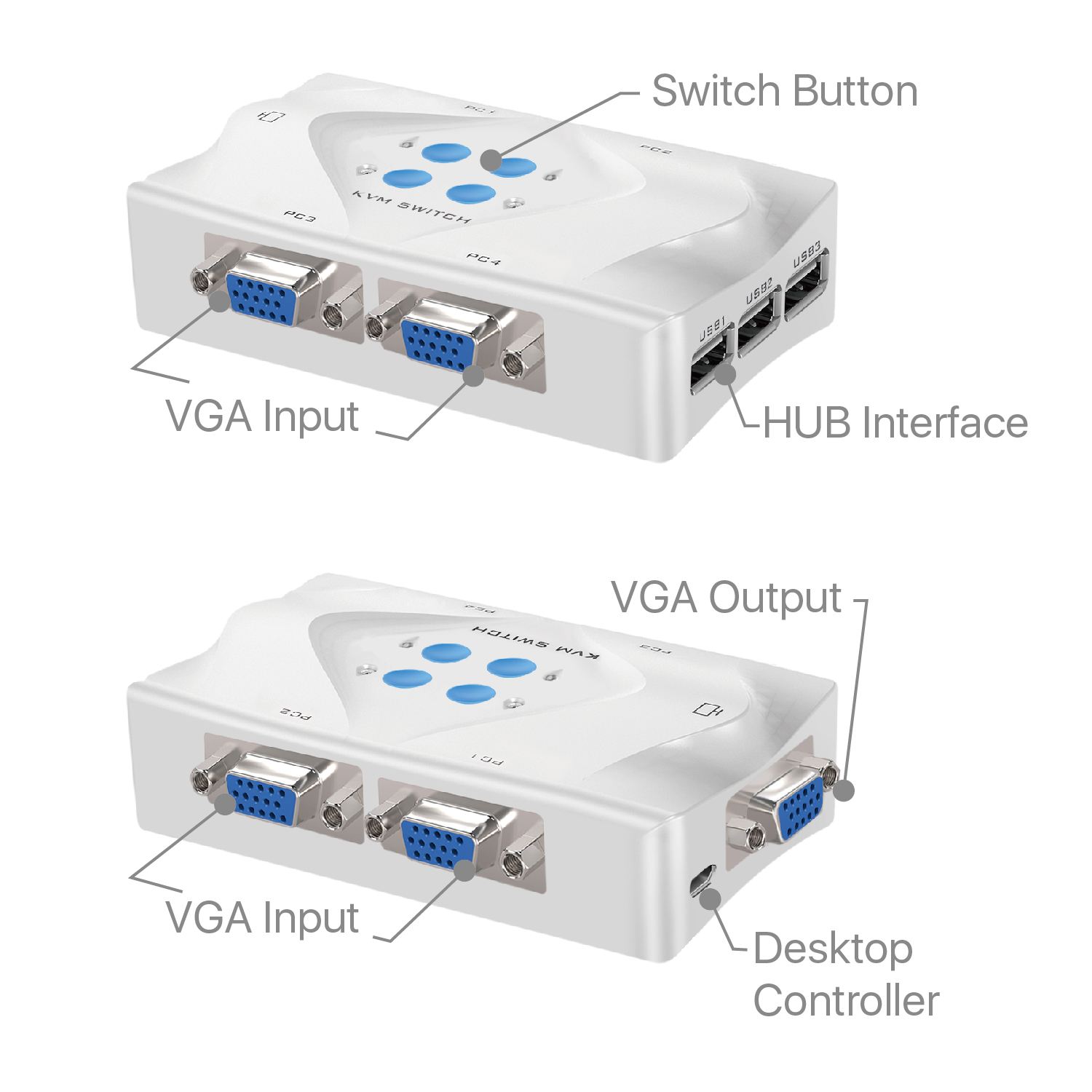

- #Monitor switch for mac install#
- #Monitor switch for mac full#
- #Monitor switch for mac mac#
- #Monitor switch for mac windows#
Windows 7/Windows 8 showing correct connected devices Supports special keyboard and mouse functions Longest, depending on connected system's OS (about 10–15 seconds) This means that you can now use the extra function keys, wheels, buttons, and controls that are commonly found on modern keyboards and mice. This class of KVM switch overcomes the frustrating limitations of an Emulated USB Class KVM by emulating the true characters of the connected devices to all the computers simultaneously. DDM USB KVM Dedicated USB console port(s) work with all USB-HID (including keyboard and mouse) and maintain the connected devices' special functions and characteristics to each connected/targeted system. This class of KVM takes advantage of DDM (Dynamic Device Mapping) technology. Semi-DDM USB KVM Dedicated USB console port(s) work with all USB-HID (including keyboard and mouse), but do not maintain the connected devices' presence to all of the targeted systems simultaneously. There are also USB KVM devices that allow cross-platform operating systems and basic keyboard and mouse sharing. However, this class of KVM switch only uses generic emulations and consequently has only been able to support the most basic keyboard and mouse features. Emulated USB provides an instantaneous and reliable switching action that makes keyboard hotkeys and mouse switching possible. Emulated USB KVM Dedicated USB console port(s) are assigned to emulate special sets of USB keyboard or mouse switching control information to each connected/targeted system. The switching to different ports is just as if you were to physically plug and unplug a USB device into your targeted system.
#Monitor switch for mac full#
(USB-HID = USB Human Interface Device) USB Hub Based KVM Also called an Enumerated KVM switch or USB switch selector, a connected/shared USB device must go through the full initiation process (USB enumeration)every time the KVM is switched to another target system/port. The classes of KVM switches that are reviewed, are based on different types of core technologies in terms of how the KVM switch handles USB I/O devices-including keyboards, mice, touchscreen displays, etc. See the Apple Support article Connect a display to your Mac.With the popularity of USB-USB keyboards, mice, and I/O devices are still the most common devices connected to a KVM switch.
#Monitor switch for mac mac#
See Connect a display, TV, or projector to Mac.įor Mac computers with Thunderbolt 4 (USB-C) and HDMI ports: You can connect up to four external displays to your Mac, depending on your Mac model. A DisplayPort device must be the last device in a chain of connected Thunderbolt devices. If your Mac has two Thunderbolt ports, you can connect each display to separate Thunderbolt ports on your Mac. If the displays themselves have Thunderbolt ports, you can connect one display to another, and then connect one of the displays to a Thunderbolt port on your Mac. If your Thunderbolt 3 display has USB ports, those can be used for data and power.įor Mac computers with Mini DisplayPort, Thunderbolt, or Thunderbolt 2: You can connect up to two displays. If you connect multiple Thunderbolt devices to each other, the Thunderbolt 3 display must be the last device in the chain. See the Apple Support article Mac computers with Apple silicon.įor Mac computers with Thunderbolt 3 (USB-C): You can connect a single display to each port. On a Mac mini with M1 chip, you can connect a second display to the HDMI port. Docks don’t increase the number of displays you can connect. You can connect one or more external displays, depending on your Mac.įor Mac computers with the Apple M1 Chip: You can connect a single external display to your Mac. Connect a wireless keyboard, mouse, or trackpadįor each display, securely connect a video cable (and adapter, if necessary) from a video output port on your Mac to the video input port on the display.Get started with accessibility features.Use Sign in with Apple for apps and websites.Manage cookies and other website data in Safari.View Apple subscriptions for your family.Subscribe to podcast shows and channels.Sync music, books, and more between devices.Send files between devices with AirDrop.Make and receive phone calls on your Mac.

Insert photos and documents from iPhone or iPad.Use a keyboard and mouse or trackpad across devices.Use Continuity to work across Apple devices.Use SharePlay to watch and listen together.Use Live Text to interact with text in a photo.Make it easier to see what’s on the screen.

#Monitor switch for mac install#


 0 kommentar(er)
0 kommentar(er)
